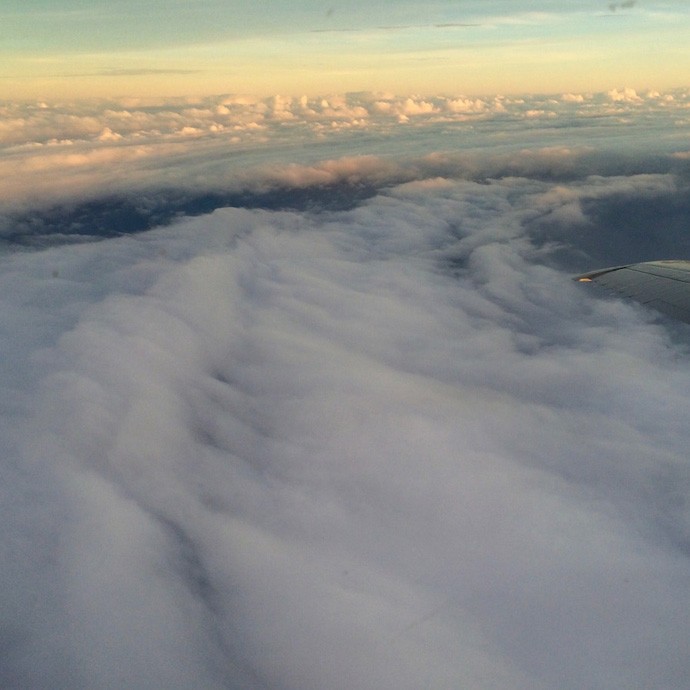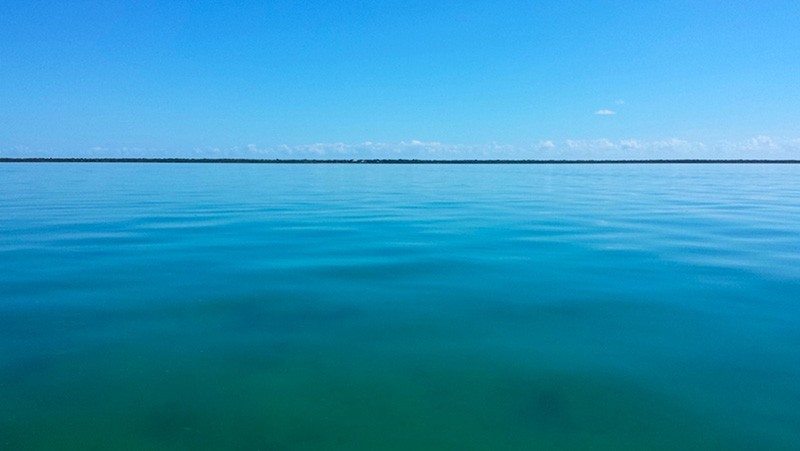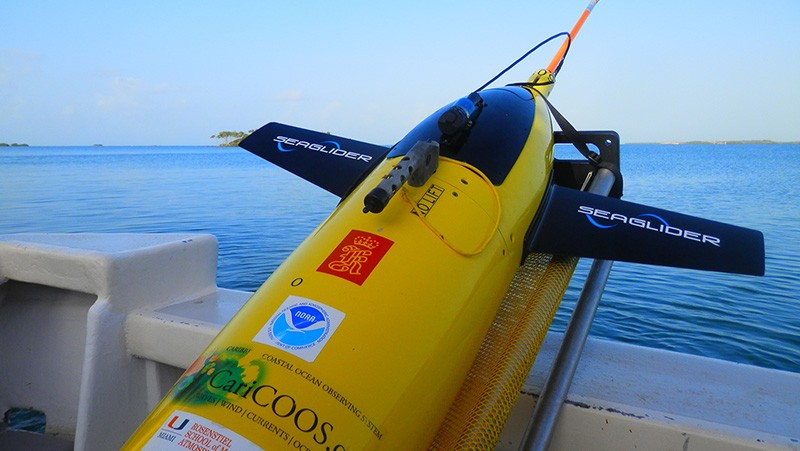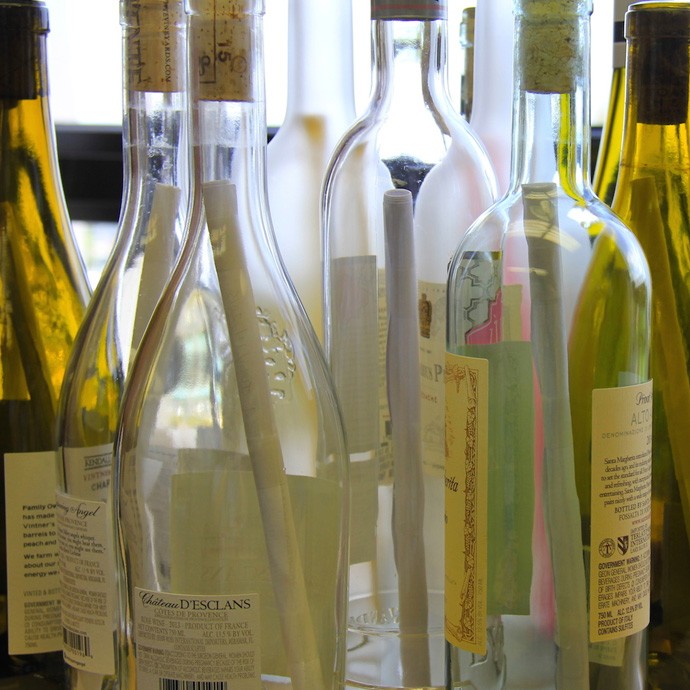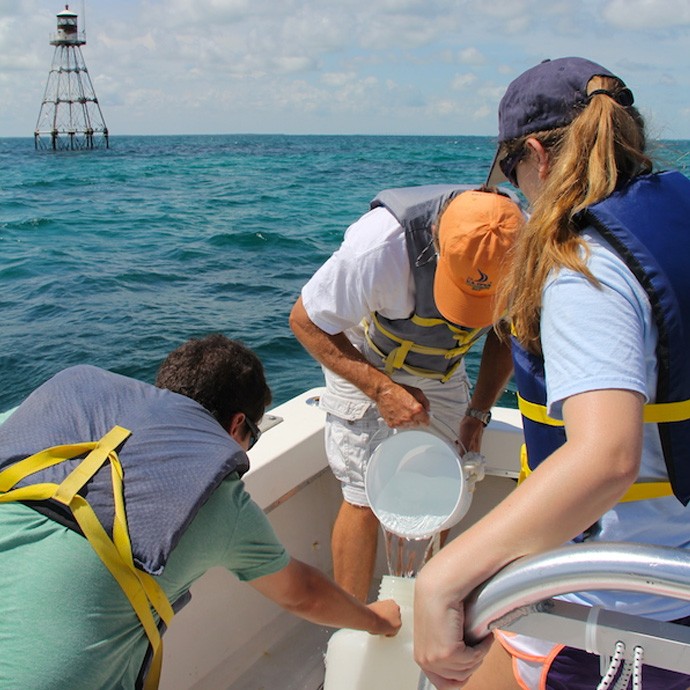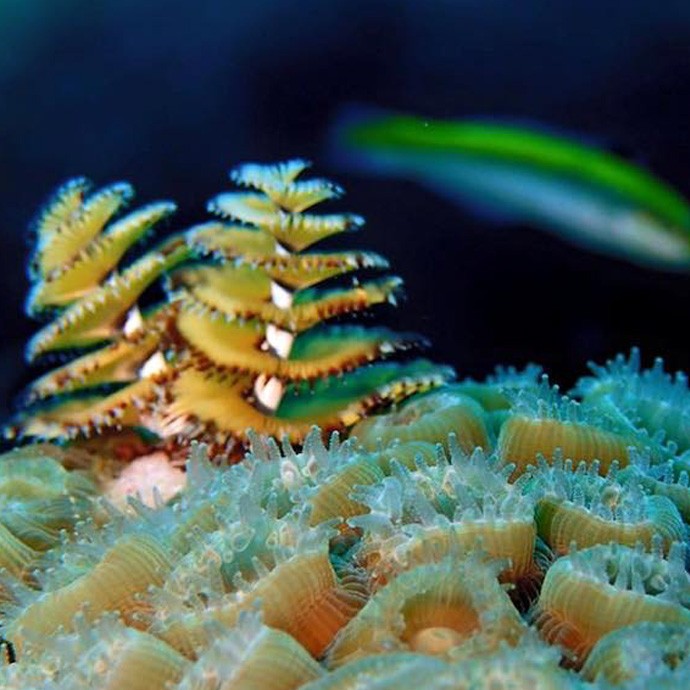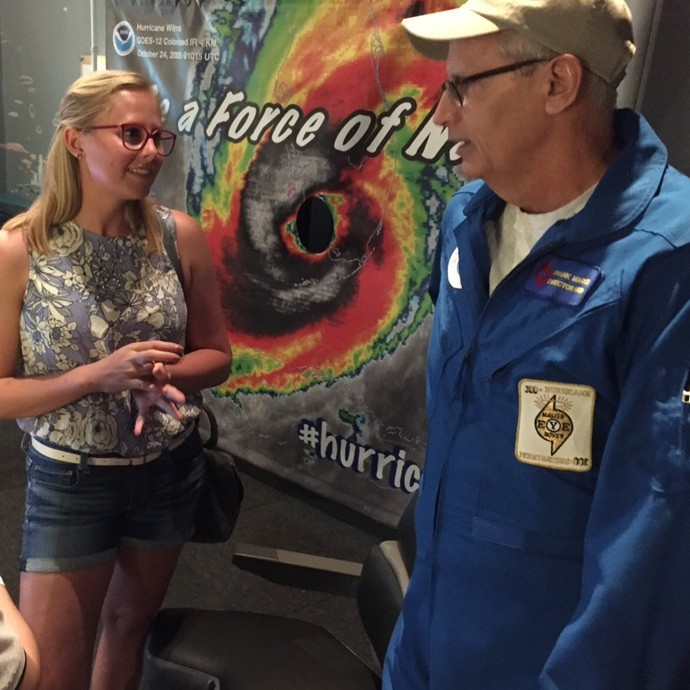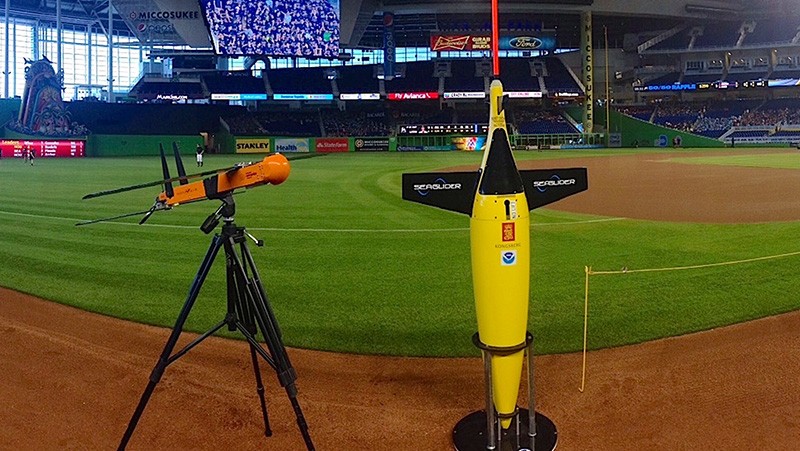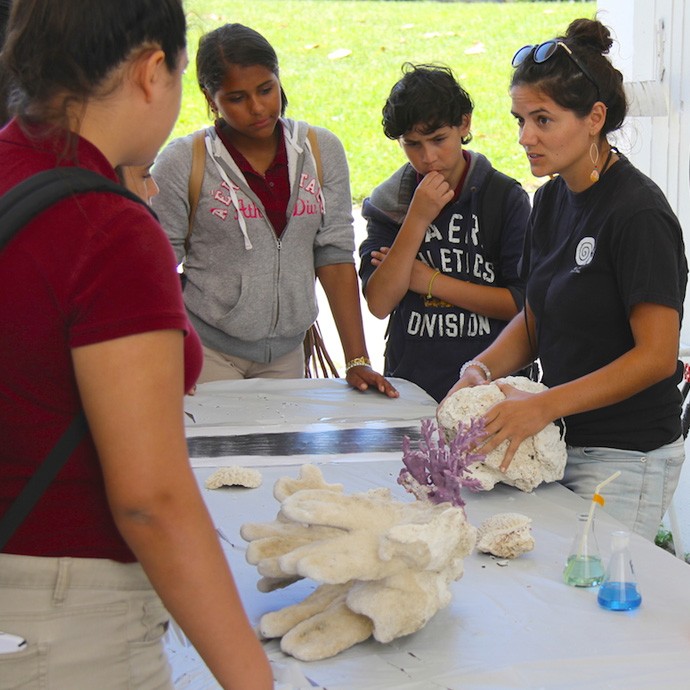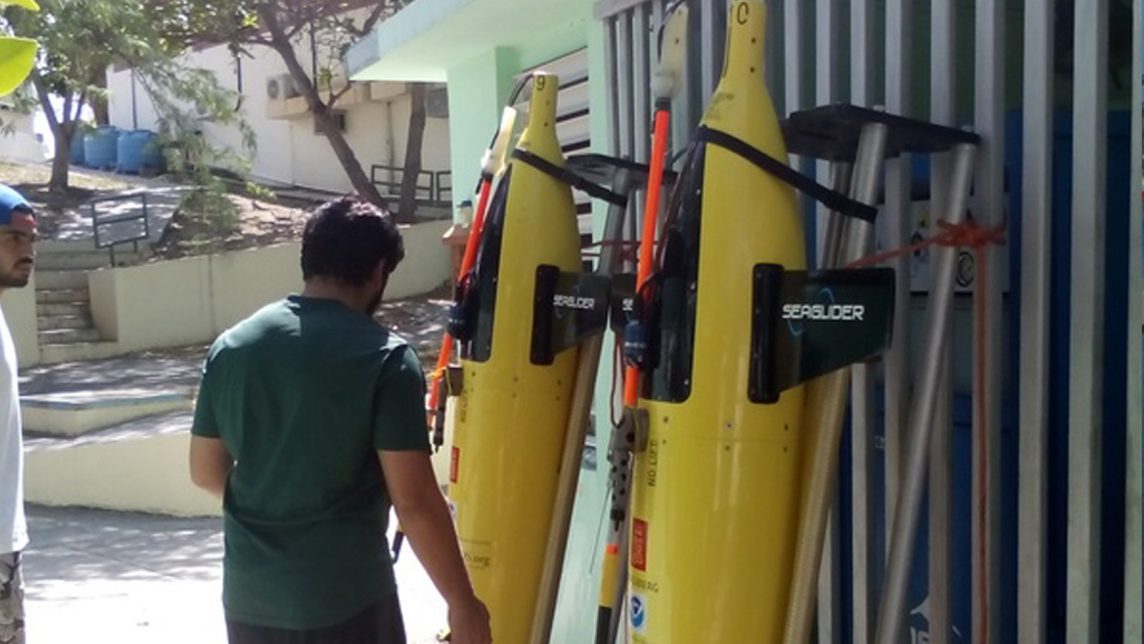Photos taken from NOAA’s P-3 aircraft during Hurricane Hunter flights conducted on Saturday, August 22nd and Sunday, August 23rd inside Hurricane Danny. Peaking at Category 3 strength on Friday, August 21, Danny had maximum sustained winds of 115 mph as it churned in the Atlantic. Danny then weakened to a tropical depression due to interaction with high levels of wind shear and a mass of dry air in the Caribbean as it moved across the Lesser Antilles. The Hurricane Hunter missions profiled Danny’s wind structure with Tail Doppler Radar, conducted various projects in support of the Hurricane Research Division’s 2015 Field Program, and surveyed the ocean ahead of the storm in order to improve forecasts.
Scientists Conduct Juvenile Sport Fish Surveys in Florida Bay
A team of scientists from NOAA’s AOML and Southeast Fisheries Science Center have conducted a series of surveys in Florida Bay this year as part of an ongoing project to investigate how juvenile sport fish in the bay respond to changes in water quality and habitat resulting from Everglades restoration. During the survey, scientists collected water quality and seagrass measurements and conducted otter trawls to sample the juvenile sport fish populations.
Underwater Gliders Begin Third Mission
On July 14th, 2015, AOML physical oceanographers deployed one of two sea gliders in the Caribbean from the University of Puerto Rico’s R/V La Sultana. The third deployment will continue the project’s mission to gather important data in the Caribbean and Tropical North Atlantic Ocean to help with hurricane intensity forecasting and provide valuable information about the role the ocean plays in tropical cyclone development. What’s new for this mission? For the first time, the gliders will collect ocean current velocity profiles in addition to the real-time temperature, salinity, and oxygen data. AOML scientists also equipped the glider with an improved battery which will allow the glider to record more profile measurements. The second of the two gliders will be deployed in the Tropical North Atlantic in the upcoming weeks.
July Hydrographic Survey Conducted in the Florida Straits
AOML physical oceanographers and interns conducted a hydrographic survey along the 27th north parallel in the Florida Straits aboard the R/V F.G. Walton Smith on July 14-15 as a component of the Western Boundary Time Series project. These 2-day cruises are designed to calibrate daily estimates and quantify Florida Current volume transport and water mass changes.
Ocean Sampling Day 2015
Photos of AOML microbiologists, interns and citizen scientists collecting samples on Ocean Sampling Day at sites in the Florida Keys, Miami, and La Jolla.
AOML Scientists Establish Ocean Acidification Monitoring Site at Flower Garden Banks
AOML successfully established the final of three sentinel climate and ocean acidification monitoring sites at the Flower Garden Banks National Marine Sanctuary in the Gulf of Mexico this month. Below are a few photos taken by AOML researchers of the biodiversity found on the reefs at the Flower Garden Banks. Photo credit: Lauren Valentino, NOAA
Hurricane Researchers “Feel The Force” at the Frost Museum of Science
On Saturday, May 30th, personnel from AOML’s Hurricane Research Division along with Outreach & Communications staff participated in the Patricia and Philip Frost Museum of Science’s annual “Feel the Force” event. The one-day outreach event drew over 1000 people who learned about preparing their homes and families to deal with disasters, especially hurricanes. HRD scientists staffed the permanent museum exhibit dedicated to explaining how scientists fly into storms to gather scientific data. In addition to speaking to people about the experience of flying into tropical cyclones, they also took the opportunity to explain the latest innovations in technology being tested this season and how their work will benefit hurricane intensity forecasts. HRD scientists also granted media interviews throughout the day and led a team of children in the Museum’s “Wild and Crazy Weather Challenge”.
AOML Participates in CBS4 Miami’s 10th Annual Weather Day
On Thursday, May 21st, AOML hurricane researcher Dr. Eric Uhlhorn participated in the 10th annual Weather Day event at Marlins Park, hosted by local news station CBS4. Thousands of elementary and middle school students from across Miami-Dade, Broward and Palm Beach counties were on hand as part of the fun-filled, science-focused educational field trip at the ballpark. The pre-game program was designed to teach students the basic concepts of weather and climate and how these topics relate to living in South Florida. Dr. Uhlhorn discussed the unmanned technology that NOAA uses to conduct research on hurricanes, including ocean gliders and the Coyote unmanned aircraft system.
NOAA and Partners Host Open House for 1300
NOAA’s Atlantic Oceanographic and Meteorological Laboratory (AOML) and the National Marine Fisheries Service/Southeast Fisheries Science Center (SEFSC) partnered with the University of Miami Rosenstiel School for Marine and Atmospheric Science to host an open house May 14th-16th. The three day event brought over 1300 people to Virginia Key to learn about a variety of scientific topics including hurricane research, climate science, oceanography, local fisheries, coral communities, and endangered species. NOAA and UM scientists were on-hand to describe their research projects and answer questions and visitors got to participate in a number of hands-on demonstrations at AOML, SEFSC, the University of Miami, and the Maritime and Science Technology (MAST) Academy Land SHARC and Weather on Wheels mobile outreach programs.
Underwater Gliders Retrieved After Successful Second Mission
On April 27th, AOML physical oceanographers partnered with the University of Puerto Rico to successfully recover two underwater gliders from the Caribbean Sea aboard the R/V La Sultana of the University of Puerto Rico Mayaguez. The gliders successfully transected a region in the eastern Caribbean providing approximately 3000 profile observations of temperature, salinity, oxygen, and surface as well as depth-average current velocities.
